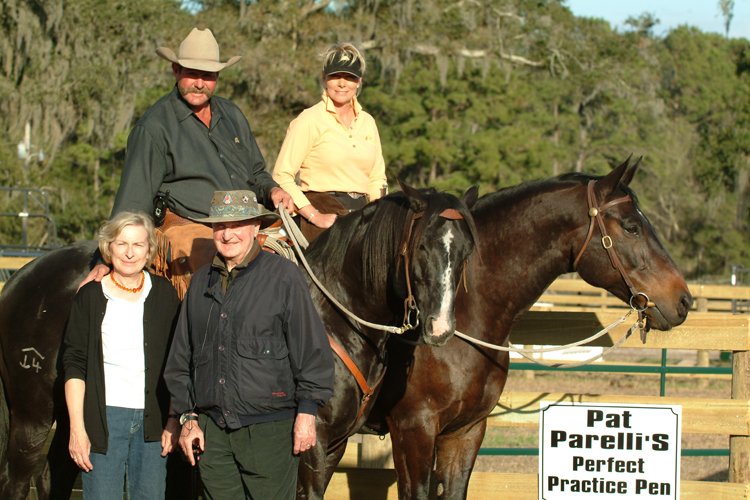
First of all, I believe that dressage should be the foundation for all horse sport disciplines. But, I also think the dressage community would benefit from the skill sets that natural horsemanship principles provide. So, I would like to share with all of you my experience at the Parelli Savvy Conference 2008.
What first impressed me about the Parelli program was that all the students first start in the classroom. Their studies include learning patience and understanding the psychology of horse behavior as a prey animal versus human behavior as a predator. A prey animal’s only defense when threatened is to flee. A human’s instinct when threatened is to fight or flee. When these instincts are triggered–by anger, fear, or frustration–80 percent of the human brain shuts down and only the reptilian portion of the brain engages. When horses enter their flight mode, 80 percent of their brain shuts down, as well. It can take up to 30 minutes for both to reconnect and have all the receptors working again. When this situation happens, it is usually the horse that loses. Developing trust for his rider and playing in a safe environment where the horse does not feel threatened is the only way to keep both brains active and learning. This communication includes relationship skills, body language, rhythm, feel and understanding. This is the basis of a common language and true partnership. This is where I think the Parelli program can play an important role for the dressage discipline, because it is designed to teach students to acquire “feel”.
Learning to feel in this program begins on the ground with only the lead rope through what is called the Seven Games. Timing is emphasized greatly in applying the aid at the correct moment on the ground. Here the horse and rider can start to develop a softness and communication skill set. This is the first place a bond may be forged, reassuring the horse that his human is there to protect him. Because a rider takes on the leadership role on the ground and learns to acclimatize the horse to random situations, he instills confidence in a short time, and the horse learns to feel safe with his human.
All of the students at the Parelli ranch have horses following them at liberty. They are not tied or bound. The horses are not forced to be with the humans. They simply prefer it. The “playground” consists of ponds, trailers, logs, plastic sheets and other items that encourage the horse’s curiosity and eliminate his fear. This method also teaches the human to stay calm, be imaginative and adjust to different situations.
Only when the Parelli students develop correct feel and timing do they progress to a horse’s back. Among the fundamentals are learning to ride bareback without a bit in the horse’s mouth; only a rope halter is used. They use only the weight of the seat and legs for aids. This has some similarities to the way young riders are taught in Europe. Very little hand is used in correct dressage riding. Students at the Spanish Riding School, for instance, must first ride on a longe line, sometimes for up to two years, before they are ever allowed to touch the horse’s mouth. This teaches the student not to balance on the horse’s mouth, promotes an independent seat and instills a true balance for the students without sacrificing the horse’s mouth. Later, it won’t matter what bit is used, because the student will have developed a soft hand. If softness is not developed through feel, then even the thickest snaffle can become cruel.
Parelli students are taught such good balance bareback that they can even jump. Despite the emphasis on bareback riding with a rope halter, the Parelli program does not condone students riding unsafely. Each student must pass tests on the ground, showing a safe connection with the horse before graduating to the ride.
I thoroughly enjoyed teaching the Parellis and their students working in dressage. They are extremely soft with the horse and teach the basis for knowing the correct timing of the aids.